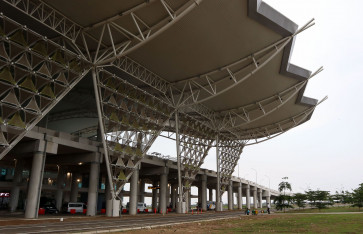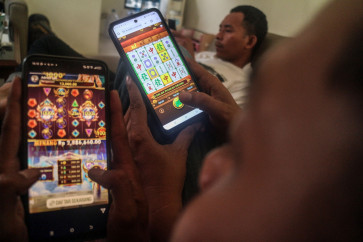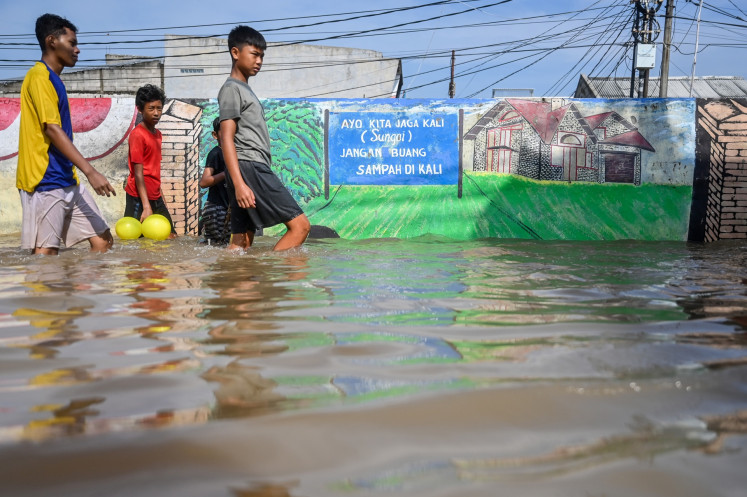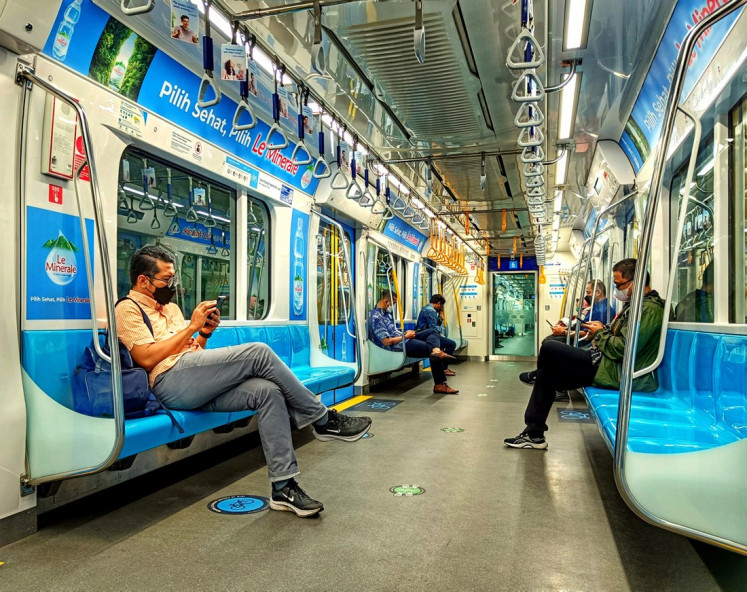Popular Reads
Top Results
Can't find what you're looking for?
View all search resultsPopular Reads
Top Results
Can't find what you're looking for?
View all search resultsAnalysis: Promoting renewable energy in Indonesia
Indonesia has an objective of increasing the proportion of new and renewable energy (NRE) in its national energy mix
Change text size
Gift Premium Articles
to Anyone
I
ndonesia has an objective of increasing the proportion of new and renewable energy (NRE) in its national energy mix. This has been stated in Presidential Regulation No. 79/2014 on the national energy policy, which states that the proportion of NRE should be at least 23 percent in 2025 and 31 percent of the total energy consumption in 2050. This target was quite ambitious as at the time, the proportion of NRE was still relatively very low. In 2014, when this target was announced, the proportion was only 6 percent of Indonesia’s total energy consumption. NRE consumption within the period from 2015 to 2025 is targeted to increase from 13 million tons of oil equivalent (TOE) to 92 million TOE, a remarkable increase of around 600 percent.
Indonesia actually has considerable NRE potential, so the government should be able to achieve the target. According to a report published by the Energy and Mineral Resources Ministry in 2017, Indonesia’s NRE potential could increase electricity generation capacity to reach 441.7 gigawatts, consisting of 94.3 GW of hydropower, 207.8 GW of solar photovoltaic power, 60.6 GW of wind power, 32.6 GW of bioenergy, 17.9 GW of marine energy and 28.5 GW of geothermal energy. This potential, unfortunately, has not been fully utilized. Based on the ministry’s statistics, the capacity of electricity generators originating from NRE was only 7.3 GW in 2017, or still 1.7 percent of the full potential.
Additionally, the increase in electricity generation capacity sourced from NRE has yet to reach the target stated in Presidential Regulation No. 79/2014. From 2014 to 2017, the increase of electricity generation capacity sourced from NRE was 0.6 GW, up only 9 percent.
Meanwhile, during this period, Indonesia’s total electricity generation capacity increased by 7.7 GW, or 14.5 percent, much higher than the increase in NRE. The total electricity production from NRE in 2017, moreover, was not much different from the figure recorded in 2014. The electricity production from NRE in 2017 amounted to around 16.5 terrawatt hours, or 9.1 percent of the total national electricity production.
This was relatively similar to the proportion in 2014, amounting to 8.8 percent of the total national electricity production. This figure is still far from the energy consumption target for NRE at 23 percent of the total electricity consumption.
The fundamental problem when developing NRE in Indonesia is that the current subsidy scheme indirectly causes the government to become reluctant to encourage the use of NRE in generating electricity. Currently, the government still subsidizes the electricity rate for household consumers subscribing to voltage capacity of 450 volt-amperes and 900 VA. The difference between the cost of electricity production and the electricity rate will be the value of subsidy provided to state-owned electricity company PLN and allocated in government spending under electricity subsidies.
The production cost for NRE electricity tends to be more expensive than production based on fossil fuels, especially coal. Therefore, it is logical for the government to hold or reduce the production cost of PLN by exerting more coal compared to NRE so that electricity subsidies can be reduced.
As a result, the rates provided for developing power plants fueled by NRE are less competitive. This is shown in Energy and Mineral Resources Ministerial Regulation No. 50/2017, which sets the highest purchase price of NRE by PLN to be a maximum of 85 percent of the average cost of local electricity generation. With this scheme, the selling price of electricity produced by NRE power plants must compete directly with electricity produced by fossil fuel plants, mainly oil, gas and coal.
If a region is dominated by oil fuel power plants, NRE may be able to compete because the energy costs of oil fuels are relatively more expensive. If the region is dominated by coal plants, however, NRE certainly cannot compete in that region because energy from coal tends to be cheaper.
The method of PLN’s electricity purchase price for NRE should not be treated the same as the price of fossil fuel. The negative externality of an increasing pollution threat from the use of fossil fuel should be calculated into the component of electricity production costs.
Likewise, the positive externality of NRE power plants such as less pollution, higher reliability and availability in the long-run must also be included in the calculation of the benefits obtained from using NRE.
The government can do this by providing incentives such as tax holidays or reductions for those developing NRE power plants.
We must change our mindset to encourage the use of NRE in the future. If we continue to just think of getting economic benefits in the short term without considering the positive externality of NRE in the long term, the NRE goal will never be achieved.
We can take President Joko “Jokowi” Widodo’s point of view in prioritizing the development of Papua to promote equity across the entire territory of the Republic of Indonesia. Indeed, the multiplier effect of the development in Papua may not be felt instantly and will not be larger than the multiplier effect of infrastructure development in Java, which has larger economic activities.
However, this is how country management really should be; promoting equity in all regions including Papua. Likewise, with the same framework, the government should also promote equity for people between generations (current generation and future generation). Prioritizing NRE development will maintain the availability and reliability of energy and, at the same time, ensure better environmental conditions for future generations.
_____________________
The writer is an industry analyst at Bank Mandiri










